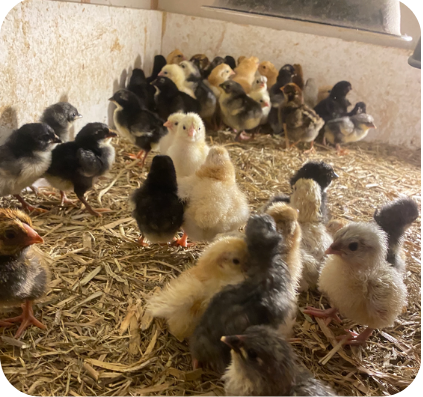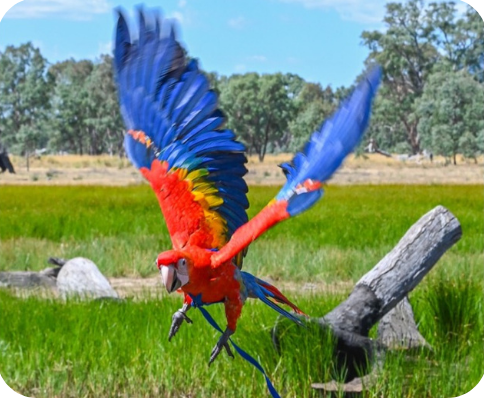Simple Puppy Training and Dog Training – As You’ve Never Heard It Before

Published
18 Sep 2023Estimated Time
Imagine having a furry best mate who is so in tune with you that he understands even the subtlest of commands. You’re able to communicate with each other through minimal non-verbal cues. Mostly through tone of voice and body language.
It’s like you’re in sync.
You don’t need to be a master dog trainer to achieve this.
G’day, Jeremy here, creator and founder of YouChoose Pets and Livestock.
My connection to animals is a way of life for me. I couldn’t imagine a life without having my dogs and other farm animals in it. Having always had a minimum of a few farm animals such as cattle and horses and several pets like dogs and ferrets at one time. I’ve been surrounded by them since childhood. And wouldn’t have wanted it any other way.
By the time you finish reading this article – you’ll understand why dogs really are a man’s best friend. You’ll also learn how to create a harmonious relationship where your pup is thriving.

Why Simple Puppy Training and Dog Training Is Important?
Dog training has been made to be more complicated than it needs to be.
The techniques in this article are simple yet effective. First-time dog owners can easily carry them out and see great results.
The YouChoose Pets and Livestock app lets you sell and buy animals all from one platform. An app that’s been built for breeders specifically and animal lovers of all kinds.
The YouChoose team has 40 years of combined experience in breeding and training animals including horse and rescue dogs.
Animal well-being and quality of life are at the heart of everything we do.
Download The App
Join Australia’s only purpose built pets and livestock directory.
Let’s change the animal breeding and selling game for the better.

Yes I want to download the free app and start buying and/or selling
By signing up you are agreeing to our Terms of Service and Privacy Policy
The way dogs communicate is completely different from how humans do. This is often where it all goes wrong. Dogs are NOT inherently naughty, even Kelpies! We believe when a dog is playing up there has been a communication breakdown between the owner and their pup.
When you buy a new pup you are taking it away from its pack. You essentially need to then recreate that pack hierarchy at home and mimic how its mother corrects bad behaviour and bonds with it.
Minus the licking grooming part.
Think about it – does a mother dog give her puppies a beef liver treat every time her pup behaves correctly?
I think not.
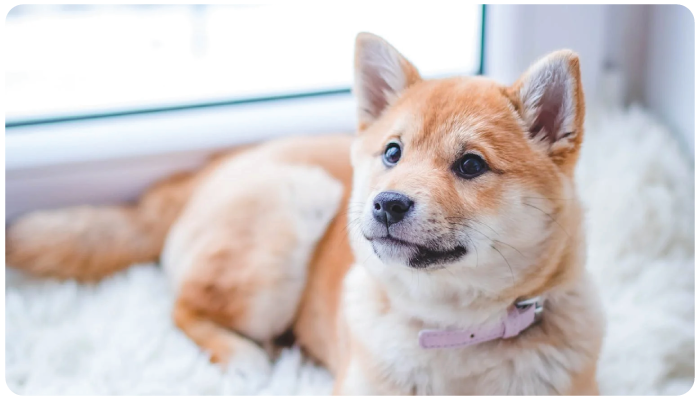
There is a place for reward training with treats. Reward training is when you want to train your dog to do tricks like roll over, play dead and spin. That’s a separate conversation.
This article on the other hand is for those people who’ve recently taken on a new dog or a puppy and need to correct ‘naughty’ behaviour like:
- Peeing inside.
- Begging for food.
- Licking.
- Jumping on people.
- Chewing things they shouldn’t.
- And more.
I’ll start with the basics – puppy training and dog training through bonding and teaching your pup where and how to fit into your household with ease.
He or she will love you for it.
The payoff is well worth it! You’ll have a respectful pup you’re immensely proud of.
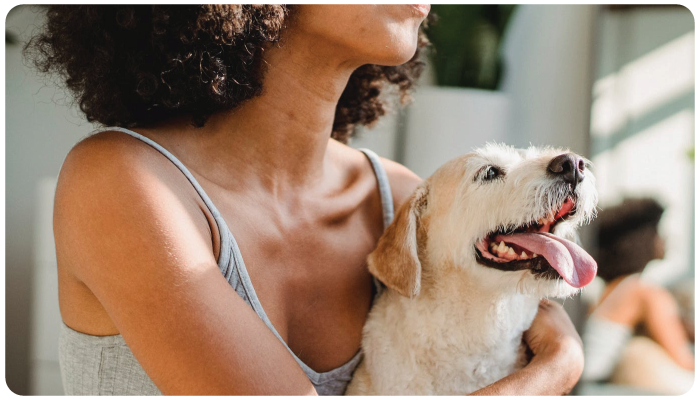
Bonding With Your Pup
Bonding is the most important part of the puppy training and dog training equation. Bonding creates that in-sync feeling between you both. It’s the binding force.
The first few weeks especially the first few days with your pup are crucial. This is usually between the 10-12 week age mark. If you work full-time, and not from home, I’d consider taking the first week off or working from home that week.
Your pup needs to be with you.
Spend the time allowing the pup to get comfortable with you. Start showing him around the place. Get them accustomed to their new surroundings. Minimal discipline should go on. That’s more for later once the bond has formed.
Gentle ‘no’s’ are sufficient during the bonding period. You’ll find yourself saying ‘no’ a lot for quite a while. But it’s more softly correcting them like a baby, however avoid babying them. Animals like dogs need to know their pack leader. You need to replicate their instinctual dynamics as much as you can.
He or she has been taken away from his pack by taking this gentle approach and taking the time out to bond with your pup helps fill that gap.
They’ll learn to feel secure, protected and to trust you. Behavioural issues like destroying things and separation anxiety occur when they feel insecure and unaware of where they stand in the family unit.
Puppy Training and Dog Training – Submission Education
Ok, so you’re at the stage where you’ve set some ground rules for your new puppy and the bond is forming.
You can now start with what I call submission education. Correcting those unwanted behaviours like barking, begging for food and jumping up on visitors. This is normally at the 11-12 week age mark.
Submission education is essentially mimicking how a mother dog parents its pups. You’re disciplining your puppy and correcting bad behaviours how he would be if he was still with his pack.
Remember you have a puppy on your hands, not a baby. They don’t understand English. You’re practically an alien to your pup.
Submission Education can be used on all breeds from miniature poodles to Great Danes. I’ve used it on all kinds of breeds and had great results. Let’s get into how to perform submission education.

Step 1: Ideally, you need to catch your pup in the act to perform the submission technique. Let’s pretend you’ve just caught your new male golden retriever, Charlie cocking his leg up on the side of the couch.
Step 2: Straightway pin him on his side to the ground. You need to position yourself behind him and with his legs facing outwards. Hold him down firmly with both hands and his entire body flat on the floor. Keep pinning him down until he submits. This might be 5-10 minutes the first couple of times you do it.
Step 3: Select your chosen command word. It’s up to you what that is. I like to use ‘no’. Use this word while you’re pinning him down. In fact, you’ll use this word when correcting all unwanted behaviours. Keep it simple and consistent.
This is submission education. Pinning the dog down on its side until it submits to you. Once they do release him, then you’re friends again. That doesn’t mean you pat or baby them it just means the incident is over and back to normal.
If you haven’t been able to catch your pup in the act like you’ve come home to a destroyed pillow. Set them up to. Then pin him down. Maybe set them up a few times and continue on with pinning and releasing.
Submission education can be used for all kinds of undesirable behaviour like,
- Separation anxiety.
- Chewing things they shouldn’t be.
- Peeing inside.
- Barking at the postman.
- And the list goes on.
This isn’t done in an aggressive way. None of the techniques and training advice the YouChoose Team provides is to be done in an aggressive manner. You need to be assertive and firm with animals when correcting unfavourable behaviours but never aggressive. Aggression teaches more aggression.
A young pup needs to know his place in the pack. Through submission education, you are teaching him that you’re the head of the pack. Anyone above the pecking order in the house can do it.
A dog that knows its place in the pack feels secure and will respond better to its leader – you. A dog that doesn’t know his place in the pack puts the entire pack at risk. As the old adage goes – You are only as strong as your weakest link. This is certainly true with pack animals.
For a bigger impact, submission education needs to be coupled with lead training.
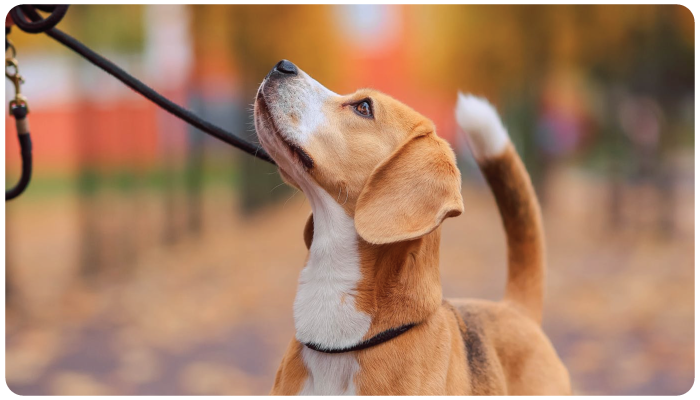
Lead Training Your Pet Dog
Lead training is particularly good for dogs that ignore you.
Congratulations on making it this far! You’ve spent some good quality bonding time with your pup and started on the submission education. Now it’s time for lead training.
A real commitment needs to be made to consistently carry out submission education and lead training ideally every day at least a few times in the morning and in the afternoon. It can be 10 minutes minimum if that’s all you have. Consistently every day works best.
The goal with lead training is to get your pups’ attention, for them to know that you’re in full control and they can’t do anything you don’t want them to do.
A choker chain lead and collar work best. You start to walk with them not allowing them to walk past you. They need to walk beside you. Not in front of you. As you take a step and they go to walk in front of you gently but firmly whip them back. You may need to do this a few times.
You’ll well and truly have his attention by now. They’ll start to respect the fact that you’re in full control.
Preferably when you catch your pup in the act of doing something naughty and you’ve pinned him down then connect them to the lead and proceed through the lead training for a few minutes.
All of this combined will lead to a well-trained pup.
A Well-Trained Dog
The combination of the bonding, the submission education and the lead training is frequently carried out starting with the bonding and gentle discipline the moment you bring home your new pup you’ll end up with a nicely trained pup in no time.
With submission puppy training and dog training, you’ll notice a lot of naughty behaviour will start to disappear even if you haven’t pinned them down for that specific behaviour. This is because the dog is receiving training that it understands. You’re effectively communicating with your pooch.
Dogs end up in rescue shelters and given to farms often because the owner lacks education on how to properly train them. The YouChoose team aims to empower people to prepare their pups correctly from the get-go and avoid the heartache of having to give them away.
It doesn’t need to be like that.
I sympathise with why this needs to happen and sometimes it’s unavoidable. But we guarantee that you’ll see results if you dedicate a small amount of time to bonding and correcting behaviours through submission education and lead training. Your little pup will thank you for it and give back 10-fold what you put in.
The trade-off is well worth it.
For more practical articles like this one, subscribe to the YouChoose Mailing List. We’re focused on helping you and your pup live a thriving, healthy lifestyle.


